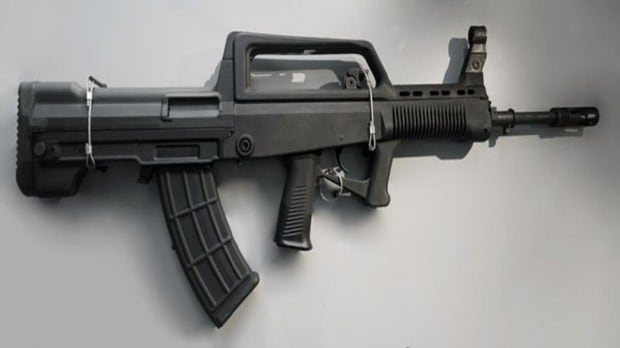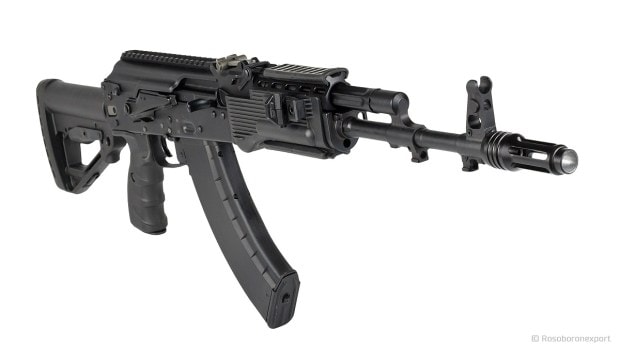India and China are modernising their militaries at an unprecedented scale. While the Chinese military has been displaying its large military platforms and systems, its world of small arms is shrouded in mystery, especially the new guns. India is also in the midst of replacing its clusters of vintage-category small arms with next-generation guns. India has a 3,488 km long Line of Actual Control (LAC) with China.
All three sectors– the eastern sector which spans Arunachal Pradesh and Sikkim, the middle sector in Uttarakhand and Himachal Pradesh, and the western sector in Ladakh—are marked for ground attack in most of the scenarios under the concept of “limited war”.
Guns are the primary weapon for militaries. How are these armies building modern small arms and their firepower?
On the frontier, the Indian army carries weapons like the American Sig Sauer rifle, the Israeli Tavor assault rifle and the good-old AK-47.
While the Chinese army along the border with India, including Tibet, has been carrying the QBU-191 marksman rifle among other small arms.
Since its inception in 1927, China’s People’s Liberation Army (PLA) has always focused and shown its military prowess on its land forces and equipment.
Interestingly, Chinese gun manufacturers—mostly state wounded and operated—also try to keep it ambiguous with an alpha-numeric name or simply a “Type”. On the surface, the military simply calls it a gun; even though any classification, or standards until it is ready for export or final display during the parade.
While both militaries have a fairly diverse range of small arms like pistols, carbines, light and medium machine guns, the focus here is on the strategic infantry rifle.
China’s “Type 20” guns (since 2019)
The Chinese military’s next-generation service is part of the QBZ-191 series of rifles. The PLA define it under the “Integrated Soldier Combat System”. The QBZ -191 is uniquely chambered in the Chinese-patented 5.8×42mm calibre.

The rifle’s designation “QBZ” comes from the Chinese words– light weapon (Qing Wuqi), rifle (Buqiang) and automatic (Zidong)”. China recently renamed it Type 20 series. Why does the PLA call it Type 20? There is no clear answer except the new ubiquitous number “20” which cuts across its armed forces and includes the latest fighter jet J-20 and Z-20 helicopters in the arsenal.
Reports suggest Type 20 is the next-generation firearm for the Chinese military forces. The Type 20 series rifles are designed and manufactured by the Chongqing Jianshe Industry of the CSGC. While the CSGC claims it entirely has its own design, experts point out its similarity to the Heckler & Koch 416 rifle, which is used by the United States Marine Corps.
The Type 20 series is actually an improvement over the Type 95 series. In comparison with Type 95, it is much lighter. It does have the picatinny rails to be selectively installed through screw holes for a flashlight, laser module, foregrip, bipod and even laser-sub pod. The notable improvement is the variable zoom sniper scope called QMK-191 which could double up. However, its test result is not known in terms of its range and accuracy. Along, it has three variants Barrel length–14.5 in QMZ-191, 10.5 in carbine and 21.7 in Designated Marksman Rifle (DMR).
A report suggests that the Type 20 series can fire up to 20,000 bullets with a ballistic performance at medium to long ranges.
The key feature in the latest QBZ series is the free-floating barrel which drastically reduces possible mechanical pressure distortions of the barrel alignment and vibration for uniformity in shot-by-shot.
With all its technical tools and tactical fringe integration which combine its firepower, its practical demonstration has been limited to the cosy confines of close-quarters combat simulators and augmented reality. The PLA has not tested its small arms in the conflict zones which is a must to acquire a firepower definition in the war scenario like the cult of AK-47 and HK-416.
Indian army’s AK-203 (2023-24)
They are officially known in Russian as “Avtomat Kalashnikova”. While the newly inducted AK-203 and AK-47 are different models with different specifications, it is based on the solid fundamental of the AK-47 rifle. AK-203 is also acknowledged as the most advanced version of the AK-47 rifle and is a fifth-generation assault rifle of the Kalashnikov series.

At 3.8 Kg, AK-203 is shorter in length and lighter than the 5.56mm INSA (Indian Small Arms System) assault rifle, the current standard issue for the Indian Army, which it will be replacing. These rifles, an initial 70,000 of which are from Russia, are likely to start getting inducted into the Indian Armed forces by 2024.
The 7.62mm AK-203 is a versatile assault rifle. It is well integrated with its unique design of Picatinny rails which makes the AK203 extremely capable of mounting a whole range of tactical equipment. Advanced technical solutions improved fire accuracy and barrel lifespan considerably. In general, it does have provision for advanced sighting systems, telescopic sights, holographic sights, laser aimer devices etc.
The AK-203 has a sighting range of 800m and the magazine contains 30 rounds. The AK-203 has a length of 705mm with the stock folded. Its rate of fire of 600 rounds per min is highly efficient. AK-203 also features an integrated compensator and flash suppressor.
While the AK-203 takes lead in terms of its proven legacy on the battlefield, the only challenge remains in the time-bound delivery as the full-fledged production is yet to take off under the Indo-Russian joint venture at Korwa in Uttar Pradesh. In an interaction with Financial Express while addressing media ahead of the Army Day in Januray, the Army Chief General Manoj Pandey clarified the production timeline of the AK-203 assault rifle which was delayed, “Out of the 6 lakh plus AK -203 assault rifles, we will receive the 70,000 within 32 months, he said.

